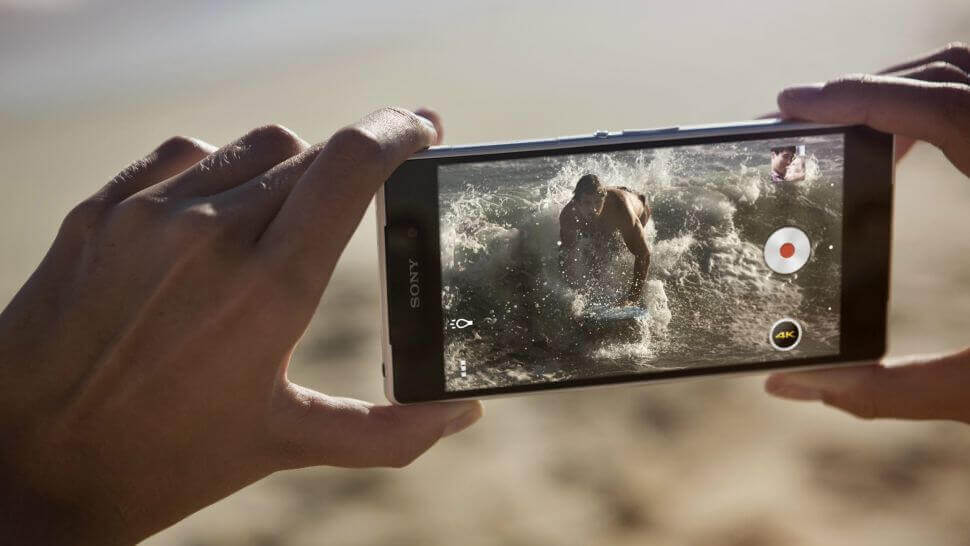Facebook is quickly becoming the new destination to watch video content on the web, with eight billion views daily, up significantly from the four billion daily views in April. Mark Zuckerberg predicts that within five years, almost all of his platform will be video content. Facebook is rapidly closing the gap on YouTube as the dominant video platform on the Internet. How has it come so far, so quickly? And what does this all mean for advertisers?
How Did We Get Here?
A combination of technological and cultural changes has helped Facebook become a leader in online video consumption.
Smartphones
The modern smartphone has millions of times more power than all of NASA’s computing power in 1969 combined—yes, the year man first set foot on the moon. This incredible technological advancement has also fundamentally changed human behavior in the developed world. Activities that have been traditionally performed on desktop computers, like online shopping, reading articles, etc., can now be done on a phone. Watching videos on a mobile phone was a rarity until recently: in 2011, only 6% of video views on YouTube came from mobile; today that number sits above 50%.
The smartphones of today are also equipped with highly sophisticated cameras. In fact, the latest iPhone can shoot video in 4K—a resolution once reserved for digital cinematographers. If a picture speaks a thousand words, then a video can move a million people. The ease with which one can combine high-quality sight, sound, and motion enables the everyman to become a storyteller by capturing moments— beautiful, hilarious, shocking—and share these experiences with their friends, families, and complete strangers online. Coupling this with increasing Internet speeds and availability in the developed world, it follows that this sharing phenomenon is exploding, and where else but on Facebook, the Internet’s playground.

Cultural Changes
The way we consume media and information has also evolved. We now ingest our news 140 characters at a time, or based on what our friends are sharing. We’re bombarded with content of all formats all day, every day. Video is highly stimulating in a sea of static content and does an excellent job of capturing and retaining our attention. In fact, 73% of video campaigns had a significant lift in ad recall on Facebook.
We’re also changing how we discover video content. We no longer want to search for videos; rather, we now trust our friends and favorite brands to share and post interesting, relevant material. We don’t look for viral videos, they find us. Facebook itself has prioritized videos into its platform and made the viewing experience consistent and simple. The presence of video within the News Feed is up 360% year-over-year and will only continue to rise.
Facebook vs. YouTube – Is It Really a Contest?
Although the competition for revenue dollars between Facebook and YouTube is heating up, the two video giants go about their video businesses very differently.
YouTube’s greatest strength is its library. There are millions of videos available for consumption, on whatever topic you could possibly dream of (and then some). As such, YouTube is quickly becoming the new search, where users typically visit the site with a specific video or goal in mind. On the other hand, Facebook relies on its vast number of users to upload content that is meaningful, personal, and relevant to immediate consumption. When users are on Facebook, they’re looking for something to catch their eye, but nothing specific beyond than that. This browsing experience makes it easier for users to discover new content; understanding this concept is crucial for success on Facebook.
Regardless of the platform, it’s easy to see why agencies are shifting dollars from TV toward the online video platforms. It’s estimated that digital advertising budgets will surpass television by 2019. However, advertisers shouldn’t simply follow the users to digital platforms and promote the same ads. Facebook offers many new and exciting ways for advertisers to reach, engage and drive important brand metrics with their users. Understanding these opportunities is key to a strong Facebook presence.
Reaching Your Audience on Facebook
Facebook provides a people-based approach to targeting, which differs from YouTube’s content-based strategy. Advertisers can target specific users based on first-party CRM data, as well as demographic, psychographic, and behavioral data. These capabilities allow advertisers to serve ads to a more relevant audience. Facebook video also offers unique product opportunities that aren’t possible on TV, which is great news for both users and advertisers:
Virtual reality: users are dropped directly into the heart of each scene. Tilting your device in any direction changes the view to mimic your head movements as if you were there in person.
Users interact directly with the video, swiping on static images, carousel, gifs, providing 360-degree product views, and more.
Carousel ads were Facebook’s first foray into interactive ads. Video carousel is the next generation, featuring a video to catch people’s attention and get them swiping right.
These are much more engaging and interactive than standard videos, and more important, they’re novel. The creative opportunities for video content creators just got so much more exciting.
GoPro Spherical: Tahiti Surf VR
Anthony Walsh and Matahi Drollet bring us inside some of the biggest barrels Tahiti has to offer in full 360°.For the most immersive experience, click and drag on your desktop, or move your iOS device in any direction.
Posted by GoPro on Thursday, November 12, 2015
GoPro uses Facebook’s 360 video feature to captivate and invite users to experience this stunning underwater adventure.
And that’s not all. Facebook has recognized the value of cross-channel priming from the small screen to the big screen, and are actively making adjustments to make this easier for advertisers to achieve. The world’s biggest social network recently announced a new objective to measure ad recall: brand awareness, which optimizes towards people who are most likely to remember your ad. Advertisers can now also report on performance such as the target rating points (TRP) and estimated ad recall, both of which are traditional KPI metrics for TV advertising.
These latest changes further enforce the notion that Facebook is clearly putting its money where its mouth is on the video front, so watch this space.
That’s a Wrap
Online video consumption is clearly on the rise, as a result of technological and social changes. Although there are many video platforms out there, Facebook offers a unique space for both users and advertisers. The nature of Facebook ensures users are shown the most relevant and timely content, and offers a unique browsing experience for users to discover new content.
Facebook has always offered highly sophisticated targeting capabilities; however, the new product capabilities offer an incredible opportunity to reach users in new and more interactive ways than ever before. Video will soon rule the Internet’s primary playground. Don’t get left behind.
